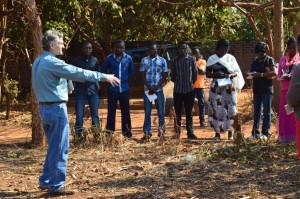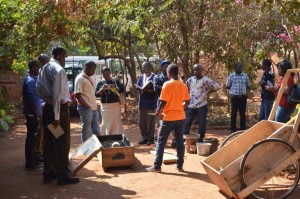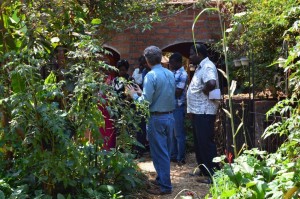
Never Ending Food was honoured to host a delegation from the Ministry of Agriculture this week. Participants included a representation of various agricultural departments including: horticulture, livestock, food and nutrition officers, and staff from the Food and Agriculture Organization of the United Nations (FAO).
This visit was one of several that the team has made this week to observe and learn from various sustainable agriculture projects in Malawi. The aim of the visits is to gather information and practical knowledge which will then be assembled into guidelines and recommendations for the nation.

Never Ending Food was able to discuss and demonstrate the immense benefits that can be obtained through the implementation of perennial and seasonal agricultural systems. Much of the visit focused on the diversification of agricultural resources, the utilization of local resources, and a better understanding of the role that these resources can play in boosting the nation’s nutrition, providing year-round food security, reducing poverty, and preventing and mitigating climate change. These benefits were all weighed against the disadvantages of the current agricultural model which advocates for the monocropping of maize, the harvesting of the majority of the nation’s food reserves in April, and the resulting problems of malnutrition, soil infertility, and susceptibility to droughts, floods, pests, and diseases.

The visitors were also exposed to some of the theoretical thinking which is the foundation for good Permaculture design. Together we explored the use of ‘zoning’ to conserve energy and maximize production. We also looked at the use of ‘guild’ systems to allow for the stacking of resources in ‘space and time’ in order to mimic the patterning of nature. The group saw how structural designs are integrated into food production, energy use, and zero-waste objectives. Group members also had an opportunity to see an assortment of various appropriate technologies including: composting toilet systems, solar drying, paper briquette making, a hand-powered water pump, worm farms, fish ponds, rainwater harvesting techniques, fuel-efficient stoves, and income-generating activities using locally available resources.
The participants seemed to leave Never Ending Food with a sense of enthusiasm, so we are hoping that some of this energy will carry over into tangible, practical, and realistic implementation of these ideas throughout the country. A big thanks to Howard and Hardwell for their assistance in facilitating and teaching, as well as to all those who helped to make the visit a reality!
